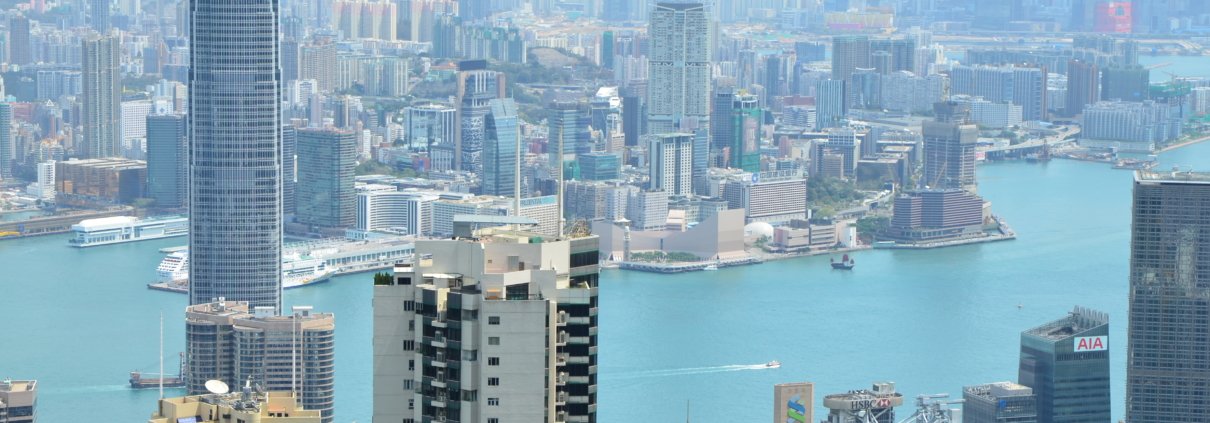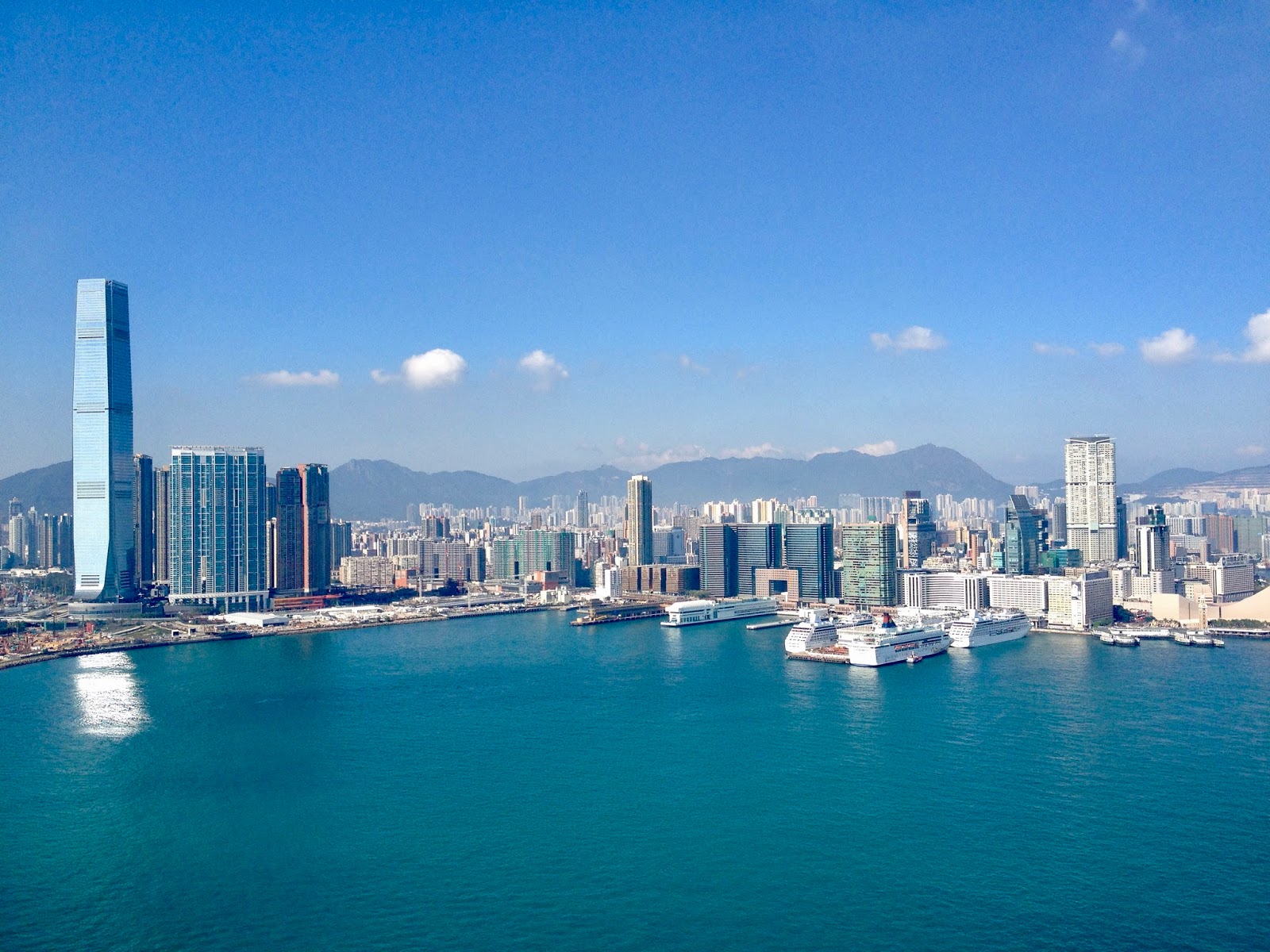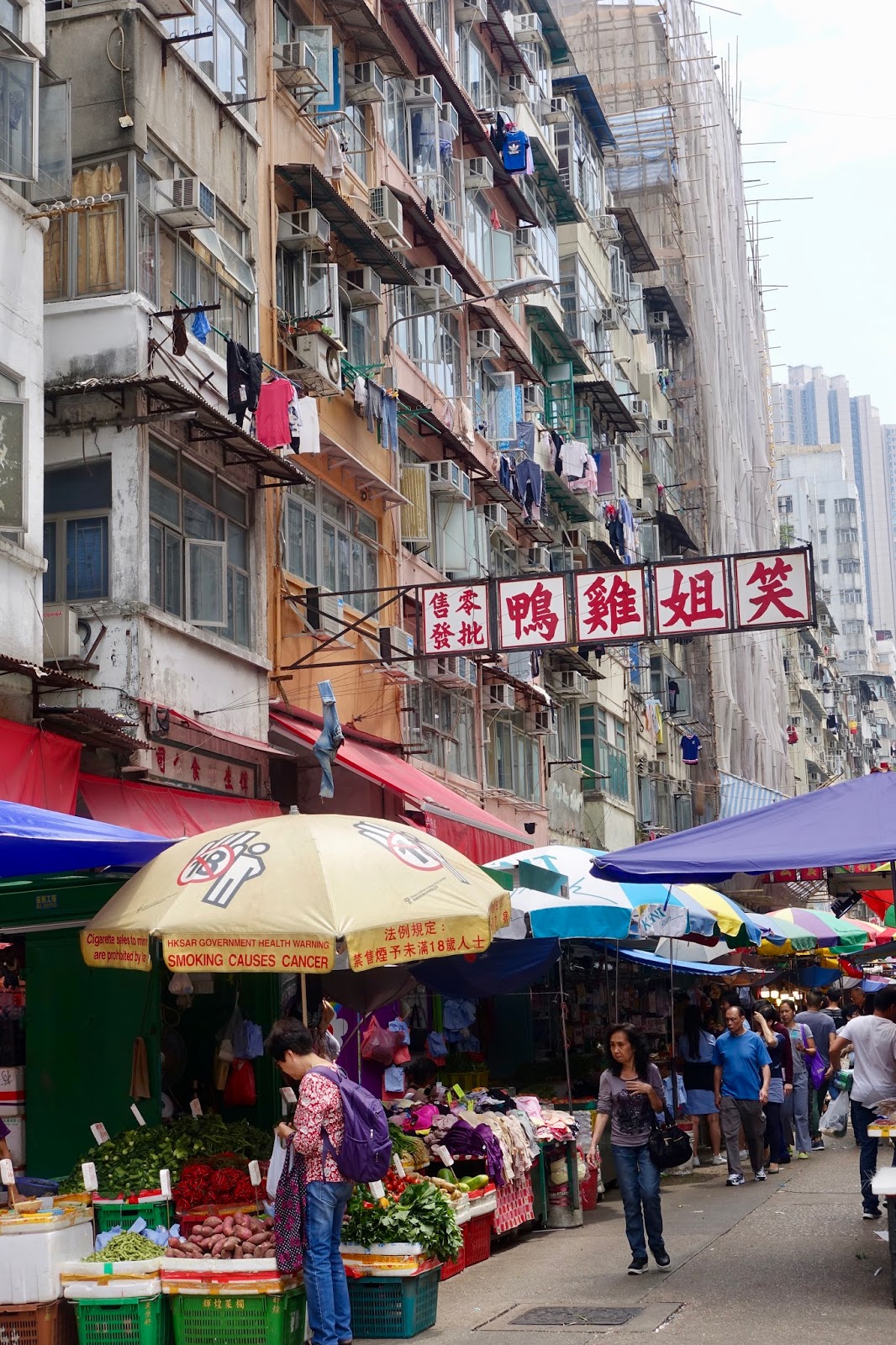Crossover of tradition & modernity:
After having spent six days in Hong Kong just recently and ten days two years before I feel confident about what to see in this fascinating city as a first-timer but also as a repeat visitor. I have identified must-do attractions and such ones you should do when having more time. This first post will be about things ever visitor has to put on its agenda when being in Hong Kong for the first time.
Overview
Many people familiar with Hong Kong recommend visiting Victoria Peak as first thing and I agree with this. There is no other place than the highest mountain of Hong Kong Island where you get such a good overview of this extensive city. But only do this when the visibility is good, otherwise it is of no use.
After this overview of Hong Kong it is a good thing to go to the core of the city, to Central, the nearest area that you have just seen from above. Go from bottom to top, but do not worry, you do not have to walk all the way up. As Hong Kong Island is rather hilly an escalator was built to facilitate moving between Harbor Front and Mid-Level, the Mid-Levels Escalator.
After going from north to south and back you probably want to explore the area in the west and the east. And once again you do not have to walk because you can ride one of Hong Kong’s trams, a funny way to discover the neighborhoods around Central.
Then of course you want to see Hong Kong’s famous skyline. For this purpose, another tourist attraction, the Star Ferry comes handy. Just by riding this historic ferry carrying passenger from Hong Kong Island to Kowloon and back you can benefit from the most wonderful views of both sides of the Victoria Harbor.
Hong Kong is more than the glitz and glam of the Central skyscrapers. No trip to this city is complete without visiting a traditional neighborhood in the somewhat grubbier yet colorful counterpart of Kowloon, may it be Yau Ma Tei or Mong Kok.
1. Victoria Peak (The Peak)
Hong Kong Island’ highest mountain – with an evelation of 552 m – can be reached by different ways. A nice one is certainly by the Peak Tram. But I would not recommend it because the waits are too long. Alternatively, I would suggest that you take the bus. A more strenuous way to reach the Peak is by walking up. I did this with my family when I was in Hong Kong a short time ago. It is not an overly easy thing to do, but a rewarding one and it does not take too long. We – all of us are physically quite fit – had about 1 ¼ hours from Mid-Level (we took the Mid-Levels Escalator until this point). We had the perfect day for this undertaking, not too hot and too humid.
Once you reach the top go to the Peak Tower for a view over Central, Victoria Harbor, Lamma Island and other islands. Because of the popularity of this place, you are not going to be on your own. To avoid the hordes of people at the Peak Tower, you can take a walk along Lugard Road instead.
2. Central District
Central District is the place where the story of Hong Kong began. Here, south of Victoria Harbor separating Hong Kong Island from the peninsula of Kowloon, Great Britain established a small port and community in the 1840s named Victoria in honor of the queen. Today, Central – as it is simply called – remains Hong Kong’s business, finance and administrative heart. You find here glass and steel high-rises, some of the best hotels, shopping malls, an upscale restaurant/bar scene, but also traces of the old Hong Kong such as some remaining British colonial buildings and Chinese establishments like street kitchens, outdoor markets and family-run businesses. This eclectic mix of cultures makes this area so appealing.

Have a look at the business district by the water, visit the cultural heritage, walk through the posh ifc Mall, stroll through idyllic Graham Street Market, eat at a food stall in the area of Graham Street or around Mid-Levels Escalator, look out for traditional businesses in the same places and have a refined dinner in SoHo (South of Hollywood Road), e.g. at Restaurant Aberdeen Street Social.
3. Mid-Levels Escalator
This ingenious Central – Mid-Levels Escalator is the world’s longest outdoor covered walkway. It stretches for over 800 meters and you need about 20 minutes to ride the complete length of it. The escalator travels downward from 6am to 10am to enable commuters to reach their offices in Central. The rest of the day it travels upward. It is a great way for tourists to explore the bustling streets of Central. Get out at some exits, e.g. at Hollywood Road to get in touch with the lively area (here SoHo, meaning south of Hollywood).
4. Hong Kong Tramways (Ding Ding)
Another great way to explore the Central area and its surroundings is by tram. These double-decker trams running parallel to the northern coastline of Hong Kong Island are by no means the fastest transportation system, but certainly the most distinctive. They look peculiar because of their height. A short time ago, one of them toppled over, but do not worry, it happens very seldom! Go to the upper deck and sit down at the front for best views.
5. Star Ferry
A ride on a Star Ferry is a must-do activity for every visitor to Hong Kong. The company carries passengers across Victoria Harbor, between Hong Kong Island and Kowloon, and this since 1888. The short ride (about 10 minutes) on one of the electric-diesel vessels with names like Twinkling Star or Meridian Star is such a relaxing activity, so totally different from the metropolis’s dynamic. In addition, it gives you the chance of enjoying unrivalled views of Hong Kong’s wonderful skyline. More to this in the next chapter.
6. Skyline
It is often said that the view from Kowloon to Hong Kong Island is more beautiful than the other way around. I agree, but the one from Central to Tsim Sha Tsui (coastal area of Kowloon) has also something to offer, especially since the International Commerce Center (ICC) was completed, Hong Kong’s tallest building. Either way, you get one of the best views of both skylines by riding the Star Ferry – as indicated in the last chapter – and let the scenery unfold before your eyes. For best effect, take your first trip on a clear night from Kowloon to Hong Kong Island as it is supposed to be the better view.

Apart from the ferry ride, Hong Kong Island’s skyline can be well viewed from the Tsim Sha Tsui (coastal area of Kowloon) waterfront. The ideal viewpoint here is probably in front of the Hotel Intercontinental. Another splendid view of this skyline is possible from the observation deck on the 100th floor of the above mentioned International Commerce Center (ICC). On the opposite side (Hong Kong Island), the 70-storey Bank of China Tower has a viewing gallery on the 43rd floor from which the Kowloon skyline can be enjoyed. An equally impressive view – although not open to the public – is also guaranteed from the Four Seasons Hotel’s Club Lounge on the 45th floor near the International Finance Centre (IFC), Hong Kong Island’s tallest building.
7. A traditional neighborhood in Kowloon: Yau Ma Tei or Mong Kok
You cannot go to Hong Kong and only see the new Hong Kong. You must see the old one as well, where life is rougher than in the Central area and surroundings.
For this purpose, Kowloon is the right choice. When coming from the south, the Yau Ma Tei locality is the nearest one. Here masses of people move through the streets, overcrowded residential buildings and street markets are predominant. Go there in the late afternoon to experience daily life in full swing. A good idea is it also to visit Temple Street Night Market. This is supposed to be one the most beautiful and colorful markets.
Another bustling neighborhood is Mong Kok. This working-class district is one of the most populated residential areas in the world. You find there themed street markets such as the Flower Market, the Bird Garden and the Goldfish Market. Best time to go to Mong Kok is also when people are out in the streets after work to go shopping or have dinner.
Overall and outlook
Hong Kong really is an intriguing metropolis. It is one of the most populated cities worldwide and becomes more populate each day. It is regarded as cultural interface between Europe and Asia, a place where soaring high-rises made from glass and steel meet traditional Chinese everyday life. This interaction between the new and the old Hong Kong makes this city so interesting to visitors.
After having put together the must-sees of Hong Kong, my next post will be on things to do here when you have more than a few days to spend or when you are a repeat visitor. Later on, I will also address the issue of where to stay as a discerning traveler and where to eat as a foodie.
What do you like best about Hong Kong?








nice
Thanks, glad you enjoyed it!